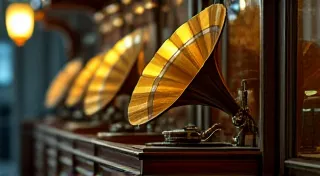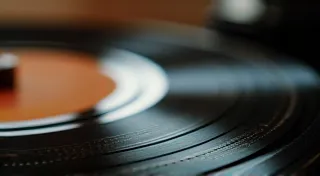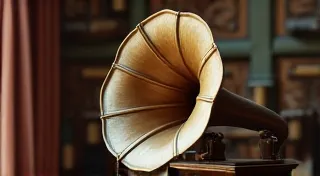The Social Impact of Antique Phonographs in Early 20th Century
The early 20th century was a period of immense technological and social change, and at the forefront of this transformation was the phonograph. Invented by Thomas Edison in 1877, the phonograph initially found its place in novelty shops and wealthy homes. However, rapid advancements in manufacturing and the introduction of portable models, like the Victrola, quickly brought this revolutionary device into the mainstream, profoundly impacting social life and the dissemination of music.
From Novelty to Necessity: The Democratization of Music
Before the phonograph, live music – performed by orchestras, bands, or individuals – was the primary source of entertainment. Sheet music was popular, but required musical literacy, limiting its reach. The phonograph changed all that. Suddenly, music could be enjoyed by anyone, regardless of their musical ability. This democratization of music had a ripple effect across society. Consider the early designs – the amplification often relied heavily on horns to project the sound. Understanding the role of those horns, and how they functioned, provides valuable context for appreciating the overall sound quality of early phonographs. You can learn more about the role of horns in early phonographs here: The Role of Horns in Early Phonographs: Design and Function.
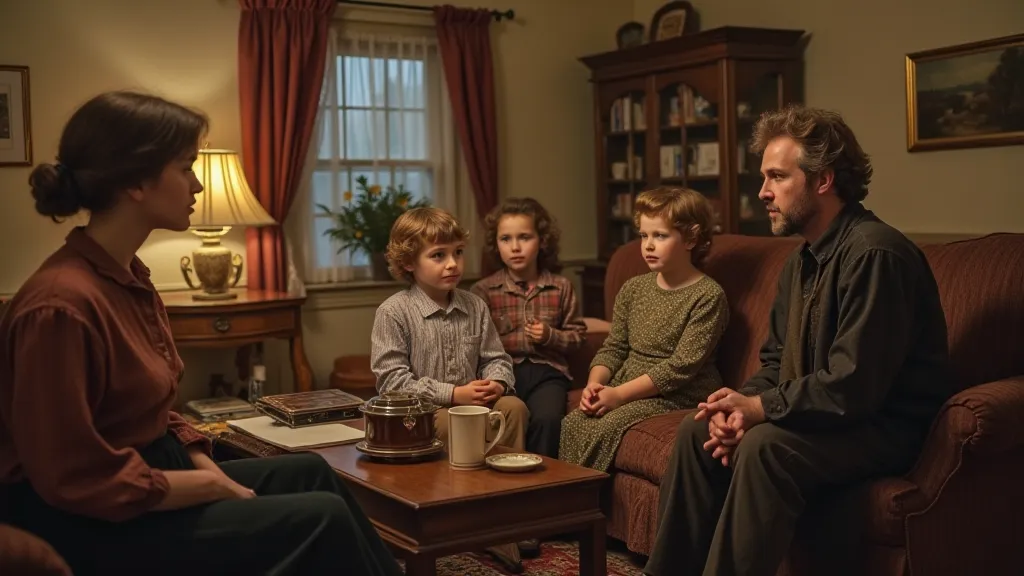
Transforming Entertainment and Leisure
Phonographs became the centerpiece of home entertainment. Social gatherings revolved around music – dances, singalongs, and storytelling were enhanced by the ability to replay favorite tunes. They also found their way into public spaces. Phonograph parlors sprang up, providing affordable access to music for those who couldn’t afford a machine of their own. Theaters and vaudeville houses used phonographs to supplement live performances, often to provide a wider range of music or to recreate iconic performances. The upkeep of these machines wasn't always straightforward, particularly with the complex mechanical systems involved. For instance, ensuring a consistent and reliable power source was essential; older models often relied on incredibly intricate mainsprings. The intricacies of early phonographs were often a source of both fascination and frustration for owners. When a cherished record player began to emit unusual sounds or experience performance issues, the pursuit of a solution often began. Many found themselves delving into the mechanics of the machine, trying to diagnose and remedy the problem. This frequently led to the discovery of common issues that could impact the overall sound quality, and the need for more in-depth troubleshooting.
Shaping Musical Tastes and the Rise of Popular Culture
The phonograph played a vital role in shaping musical tastes. Previously, musical trends were largely dictated by the elite and those with access to publishing houses. Now, record companies began to influence musical trends, catering to a broader consumer base. The rise of popular genres – blues, jazz, and early country – was significantly accelerated by the phonograph's ability to widely distribute these sounds. Early recordings captured the voices and sounds of artists who might otherwise have remained unknown, leading to the birth of true “star” musicians. The introduction of the phonograph also marked a shift in how people interacted with music. No longer was it solely a live experience, but something that could be reproduced and enjoyed repeatedly in the comfort of one’s home. This newfound accessibility led to the development of a vibrant recording industry, with companies investing in talent, promoting artists, and distributing music to an ever-expanding audience. However, owning and maintaining these machines wasn’t always easy. Many owners encountered frustrating problems, such as a noisy mechanism that detracted from the listening experience. Diagnosing the root cause of this noise could be a challenge, often requiring a deep understanding of the intricate mechanics involved. Fortunately, resources were available to help owners troubleshoot these issues – for example, detailed guides on troubleshooting a noisy phonograph, providing insights into common causes and practical fixes.
Impact on Social Norms and Gender Roles
The introduction of the phonograph also subtly influenced social norms. While initially considered a luxury, the Victrola's portability made music accessible to a wider range of social classes, blurring the lines between wealthy and working-class entertainment. Furthermore, the recorded voice of female singers – often romantic and expressive – played a role in shifting perceptions of women in the public sphere, though this was still heavily influenced by societal expectations. The phonograph fundamentally altered the landscape of music consumption, providing a conduit for previously unheard voices and genres to reach a wider audience. This democratization of music impacted social dynamics, bridging gaps between classes and exposing people to a broader range of cultural expressions. The mechanical precision required to manufacture and operate these devices was remarkable, requiring skilled technicians to handle repairs and maintenance. Replacing components, particularly the mainspring that provided the power, was a delicate procedure. Those interested in understanding the complexities of this process can find a comprehensive guide to understanding and replacing phonograph mainsprings.

Challenges and Controversies
The phonograph wasn’t without its critics. Some worried that recorded music would replace live performance, leading to a decline in musical artistry. Others expressed concerns about the potential for moral corruption through the dissemination of questionable content. The recording industry also faced legal challenges regarding copyright and artist compensation – issues that persist even today. The rise of the phonograph also coincided with the development of new legal frameworks to address the unique challenges posed by recorded music. Copyright laws were adapted to protect the rights of artists and composers, while contracts between record companies and musicians became increasingly complex. The rapid technological advancements also led to debates about the ethical implications of reproducing and distributing music, particularly concerning the potential for unauthorized copies and the impact on live performances. Understanding the inner workings of these machines, and the reasons for their occasional malfunctions, frequently became a source of frustration and a catalyst for innovation. The early models were intricate devices, prone to various electrical problems that required specialized knowledge to diagnose and repair.
A Legacy of Innovation and Cultural Significance
Despite these challenges, the antique phonograph left an indelible mark on society. It fundamentally altered the way music was created, distributed, and consumed, and profoundly impacted social life and popular culture. It paved the way for the modern music industry and remains a tangible link to a pivotal era in technological and social transformation. The ability to replay a favorite song at any time, and in any location, offered a level of convenience and accessibility that had never been possible before. This transformative impact extended far beyond mere entertainment, influencing social norms, artistic expression, and the very fabric of culture. The early electrical systems, although relatively simple by today’s standards, presented unique challenges for maintenance and troubleshooting. From issues with the motor to problems with the recording head, owners often had to become adept at diagnosing and resolving these problems. The rise in popularity of phonographs also created a demand for skilled repair technicians, who specialized in maintaining and restoring these intricate machines. The development and refinement of these machines was a continuous process, driven by the desire to improve sound quality, enhance portability, and simplify operation. Each generation of phonographs represented a step forward in the ongoing quest for the perfect listening experience.
The increasing accessibility of music through the phonograph spurred a cultural revolution, shifting entertainment habits and creating new forms of social interaction. Families gathered around phonographs to share music, and public phonograph parlors became popular gathering places. The ability to record and reproduce music at will democratized the listening experience, giving ordinary people access to music previously enjoyed only by the elite. The phonograph didn’s simply change the way music was heard; it changed the very fabric of society, influencing cultural trends, social norms, and the evolution of popular culture. Many found that keeping these machines in optimal condition required more than just occasional cleaning; it necessitated a deeper understanding of their intricate mechanics and a willingness to tackle unexpected repairs.
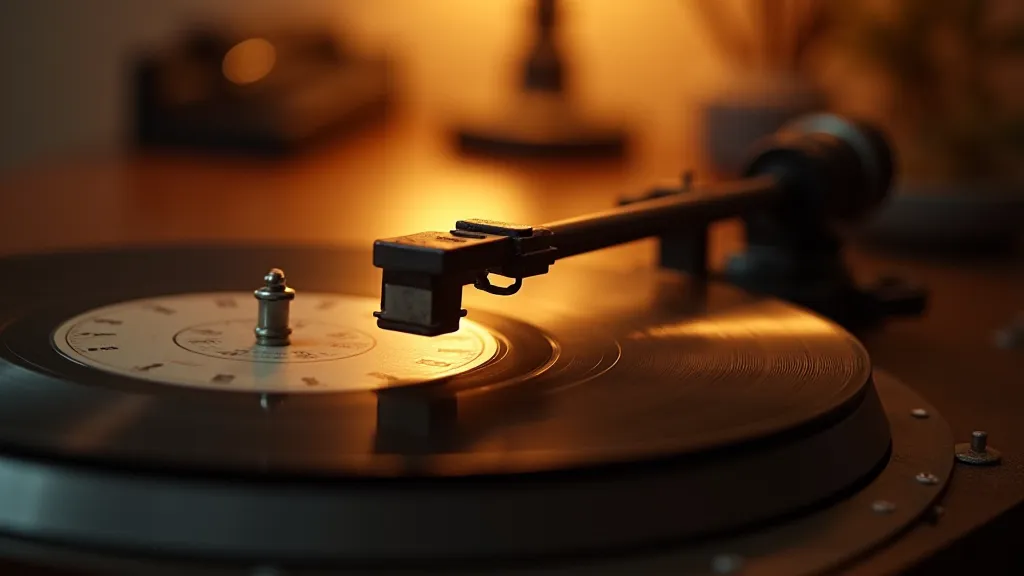
The legacy of the antique phonograph extends far beyond its technical innovations. It embodies a time when shared musical experiences brought people together, fostering a sense of community and shared cultural identity. The evolution of the phonograph, from its early, bulky designs to more compact and portable models, reflects the ongoing pursuit of greater convenience and accessibility. It serves as a reminder of the power of technology to shape our lives, our entertainment, and our social interactions. The mechanical challenges inherent in these early devices often led to a culture of repair and ingenuity, with owners frequently attempting to diagnose and fix problems themselves. This hands-on approach fostered a deeper appreciation for the craftsmanship and engineering that went into creating these machines.
The rise of the phonograph coincided with the emergence of new musical genres and the development of a vibrant recording industry. Record companies invested in talent, promoted artists, and distributed music to a wider audience than ever before. This created a virtuous cycle of innovation and growth, transforming the music industry and shaping the cultural landscape of the 20th century. These early devices, while often marvels of engineering, also presented significant challenges for maintenance and repair. For those passionate about preserving these pieces of history, understanding the intricacies of their inner workings became a rewarding pursuit.
